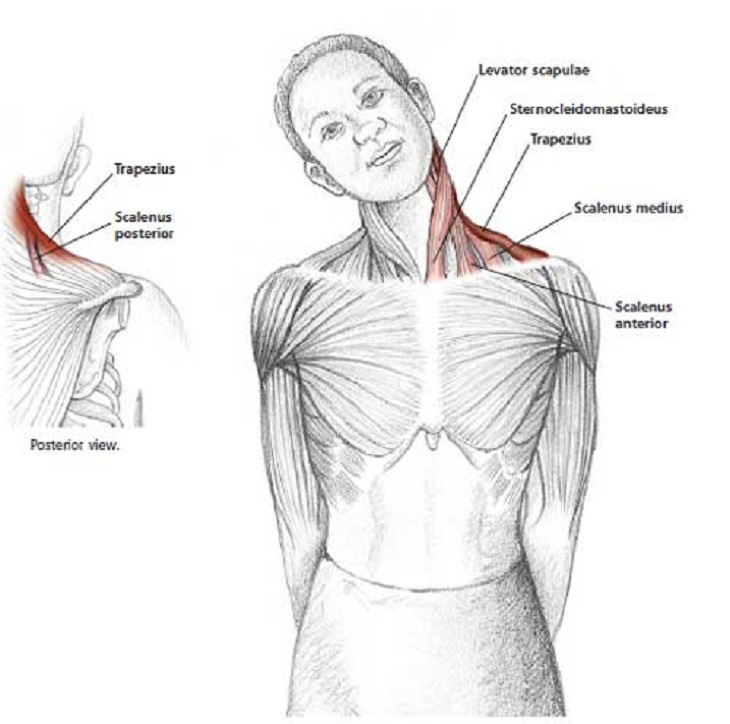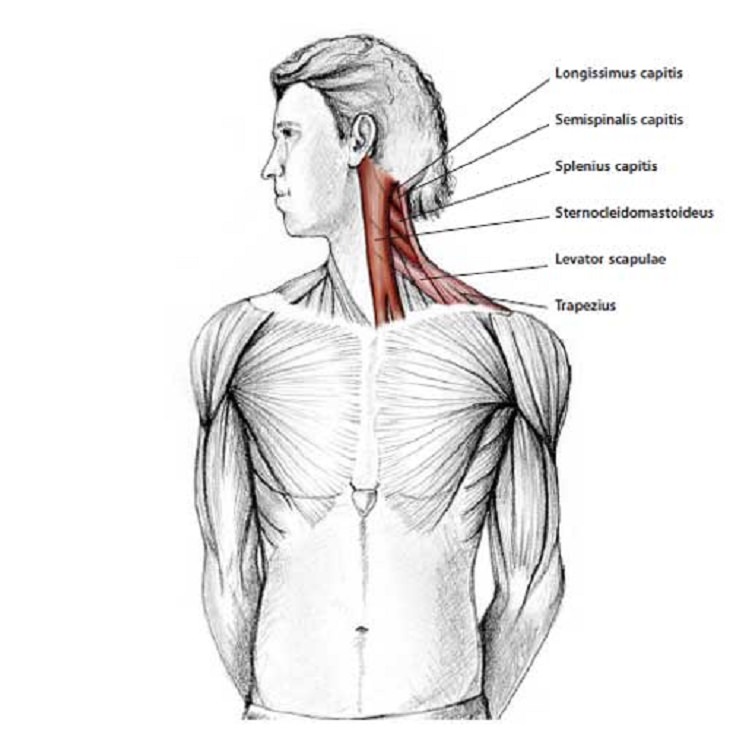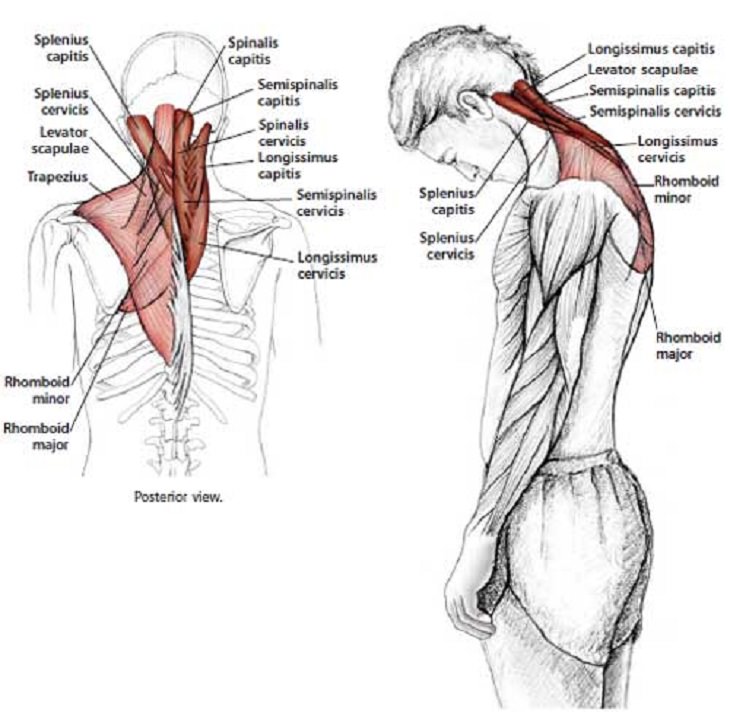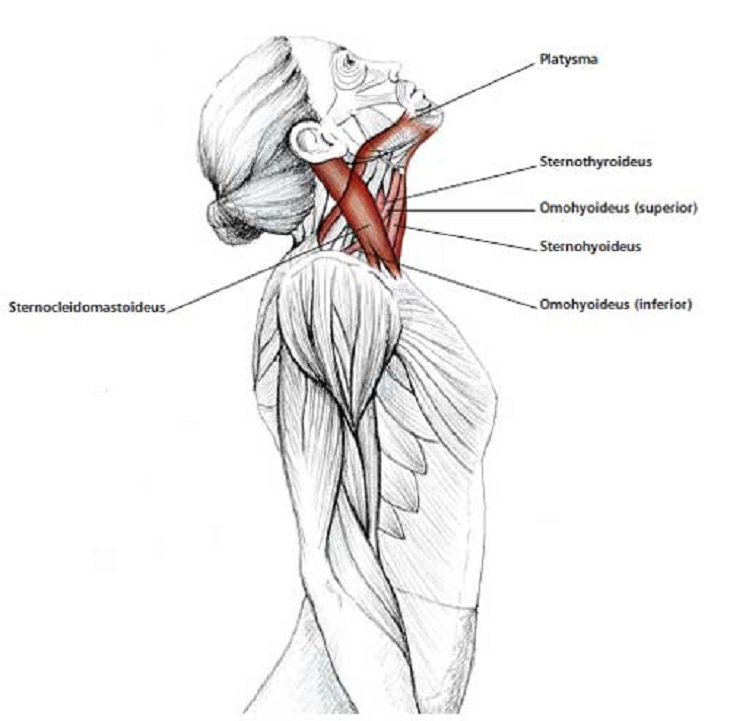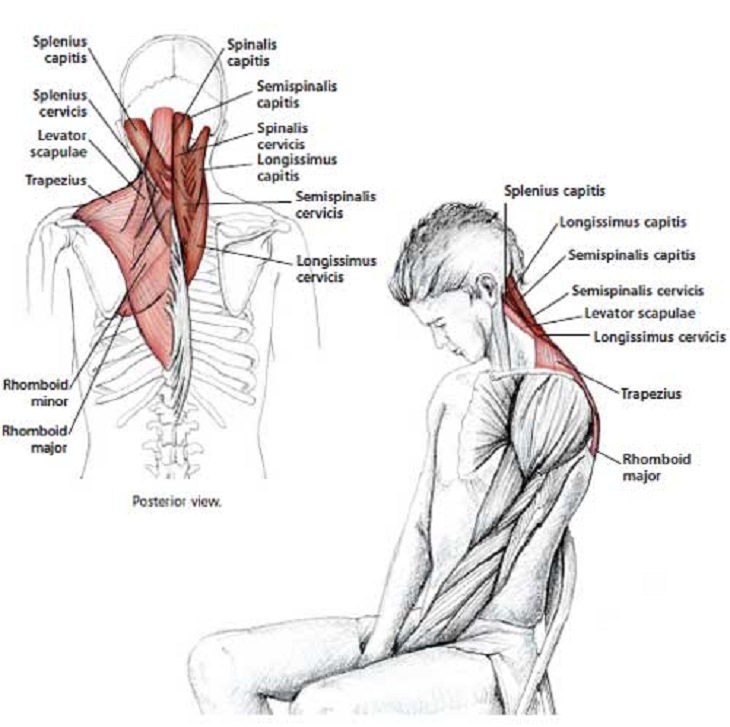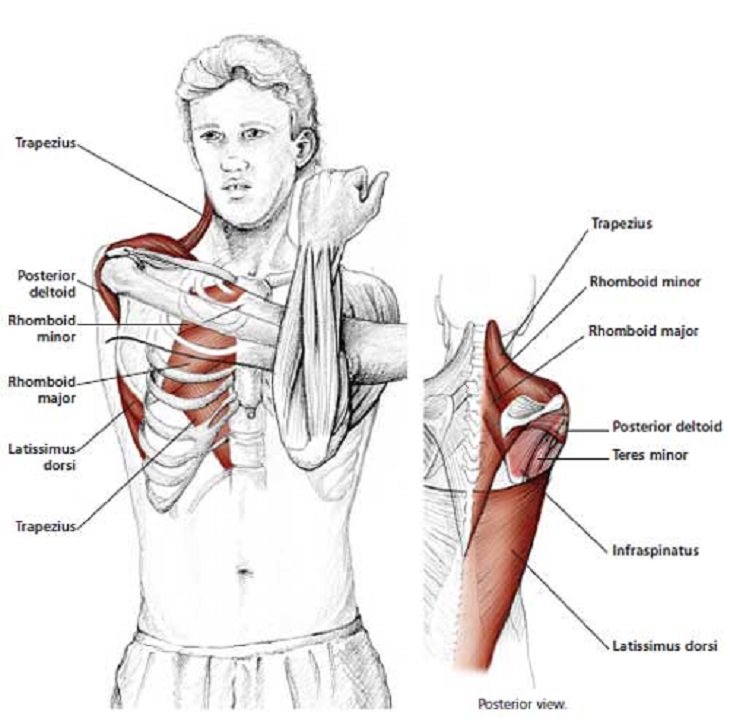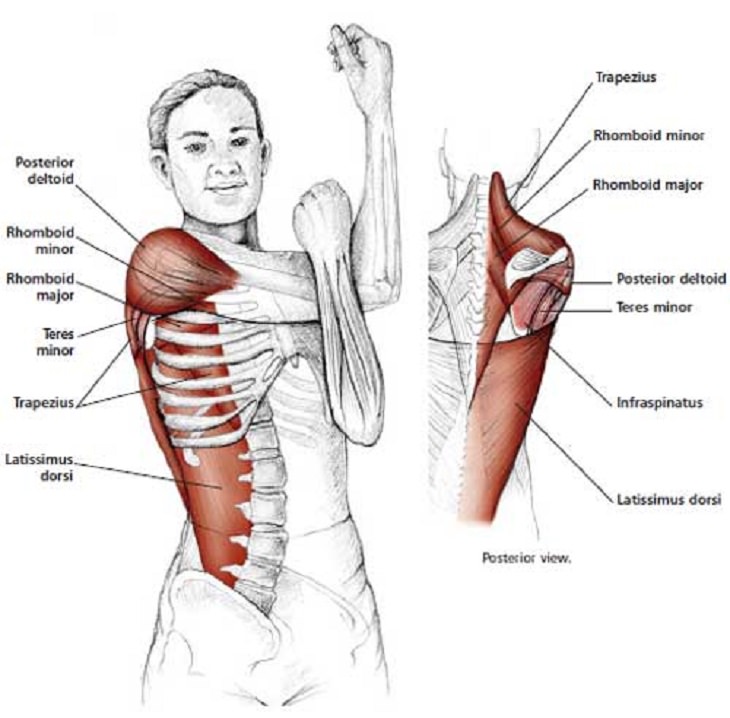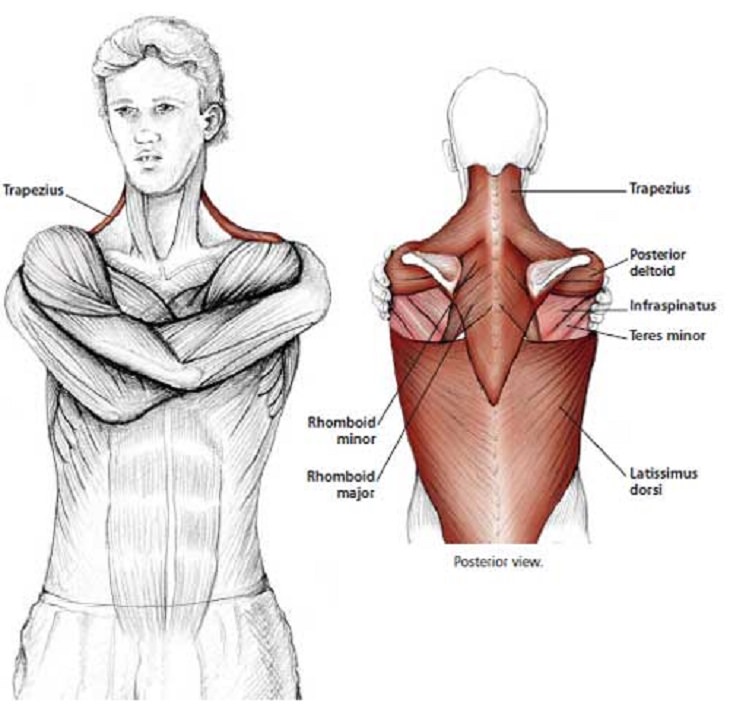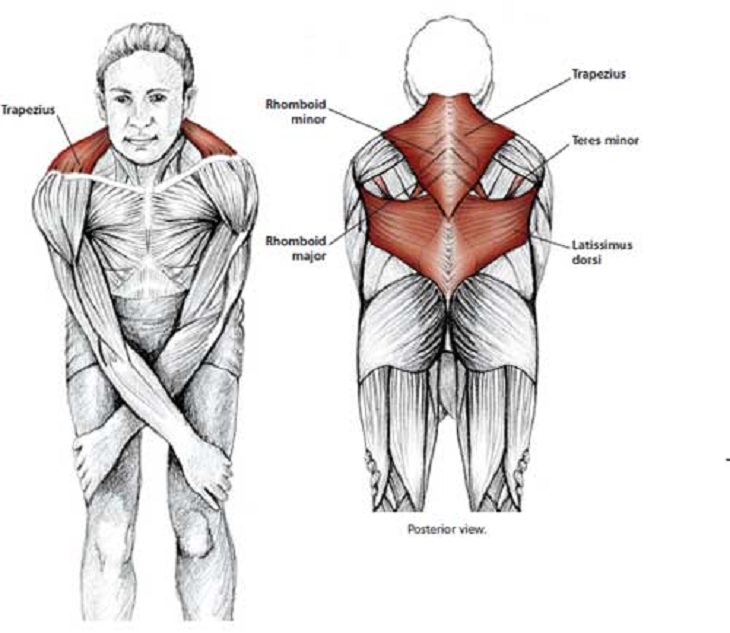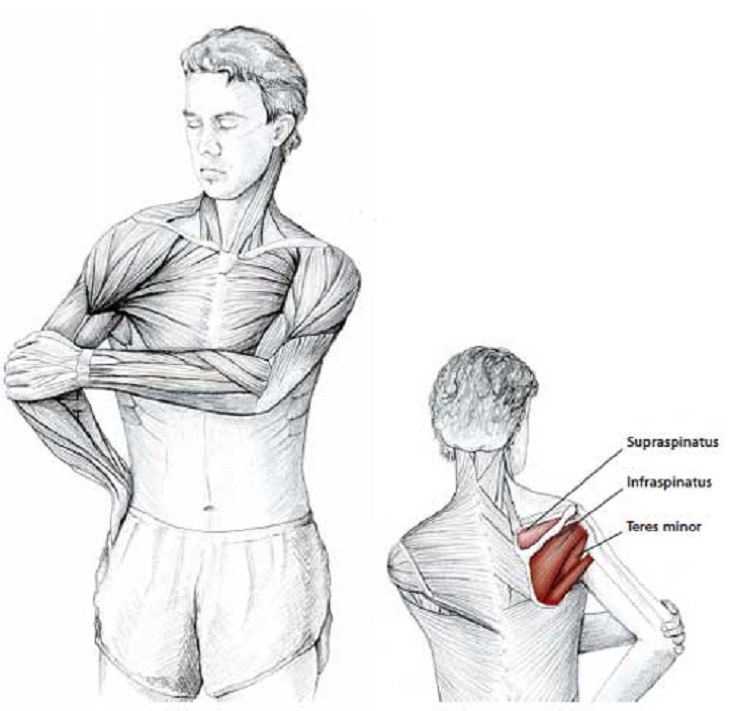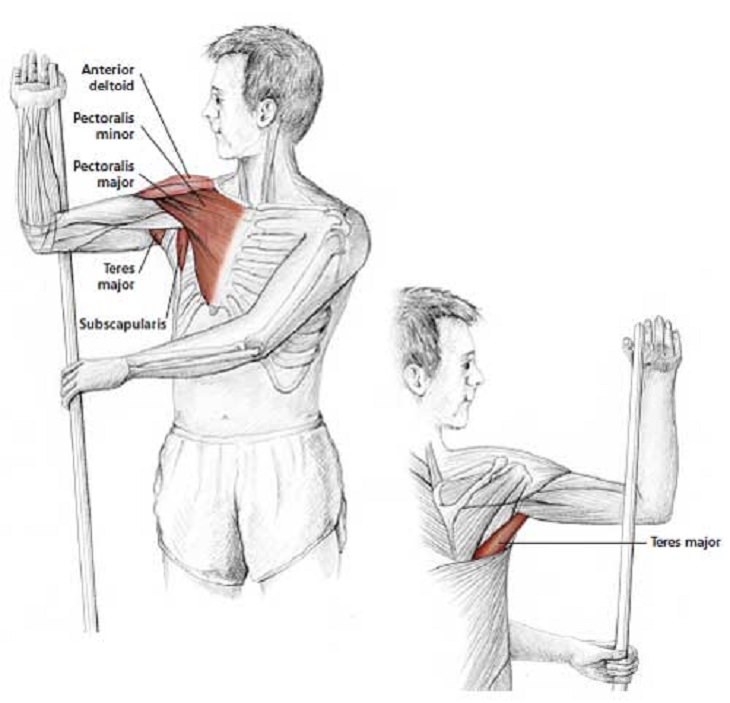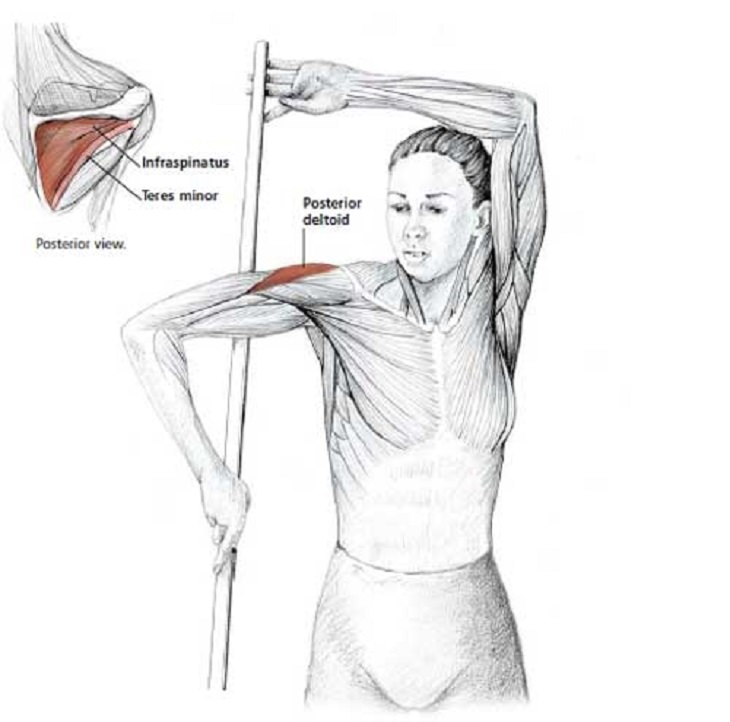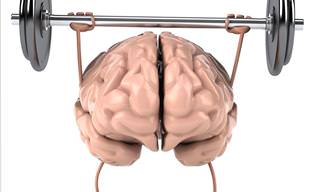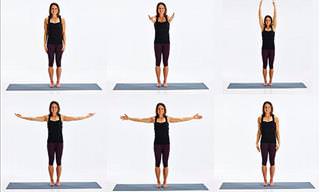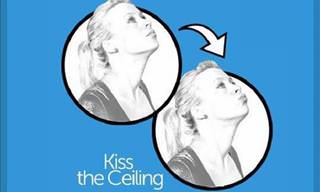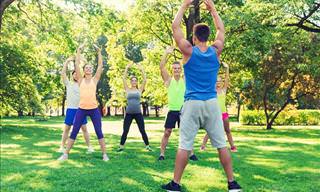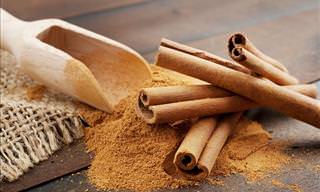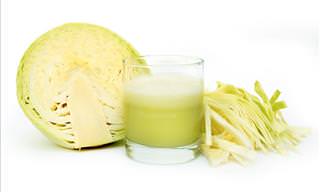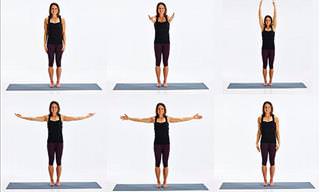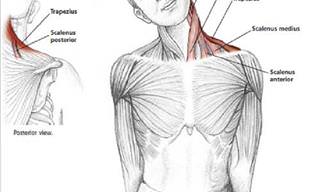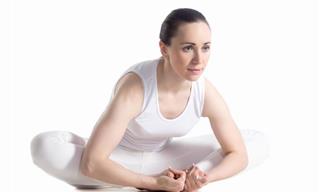A crick in the neck can be irritating, painful, and can even cause headaches and upper back pain. To alleviate the tension you might be experiencing in your neck, there are a number of natural treatments you can try at home. In addition, the following simple exercises and stretches are also effective for treating neck and shoulder pain. Most of the exercises below can be performed while sitting or standing, holding each stretch for 30 seconds, or a minimum of five to 10 breaths. For instant relief, take a long, hot shower to help loosen the muscles prior to exercise.
Set 1: Relieve Neck Tension
Benefits: The following exercises will help relieve tension in the neck. These simple stretches alleviate neck muscle strain, whiplash (or neck sprain), cervical nerve stretch syndrome or wryneck (a condition in which the head becomes angled to one side and is often associated with painful muscle spasms).
Technique: Look forward and keep your head up. Keep your hands behind your back. Slowly move your ear towards your shoulder. Do not lift your shoulders up when you tilt your neck to the side.
2. Rotating Neck Stretch
Technique: Keep your spine in an upright position, with your shoulders still and your head up. Rotate your chin gently toward your shoulder. While holding the stretch, do not let your chin fall towards your shoulders - keep it parallel to the floor.
3. Forward Flexion Neck Stretch
Technique: Stand upright, relax your shoulders and keep your hands by your side. Let your chin fall forward toward your chest. Do not overstretch the back of your neck by forcing your head down - stay relaxed in the stretch and let the weight of your head do the stretching for you.
4. Diagonal Flexion Neck Stretch
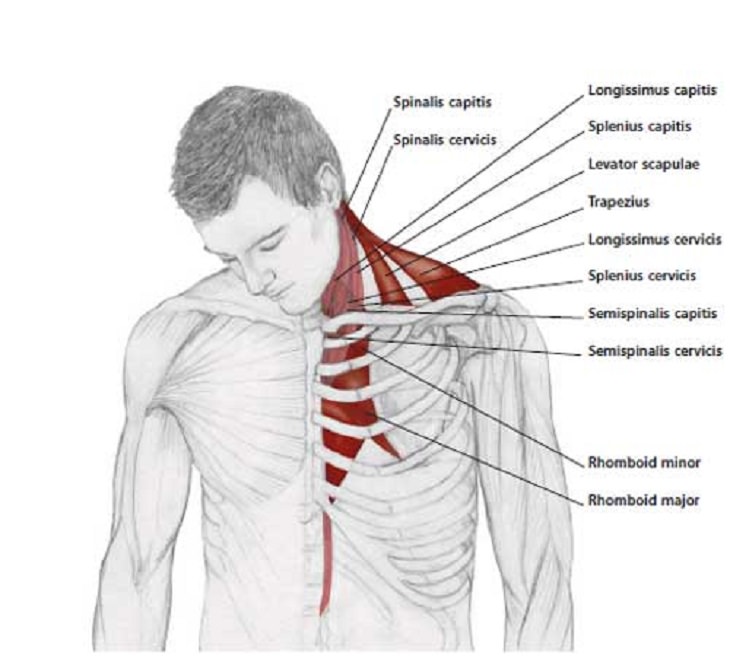
Technique: In an upright position, with your shoulders relaxed and your hands by your side, allow your chin to fall forward toward your chest. Then, lean your head to one side, gently. Do not overstretch your neck by forcing your head downward. Relax and let the weight of your head do the stretching for you.
5. Neck Extension Stretch
Technique: Stand in an upright position with your hands by your side. Ensure that your shoulders are relaxed. Lift your head, looking upwards. Keep your mouth closed and your teeth together.
6. Neck Protraction Stretch
Technique: Keep your head up, chin parallel to the floor, then push your head forward, sticking your chin out. Throughout the stretch, keep your head up and do not let your chin fall towards the ground.
7. Sitting Neck Flexion Stretch
Technique: Sit in a chair, cross your arms over one another and hold onto the chair between your legs. Let your head fall forward gently and lean your body slightly backward. Do not overstretch the muscle by forcing your head down. Relax and let the weight of your head do the stretching for you.
Set 2: Relieve Shoulder Pain
Benefits: The next set of exercises focus on stretching the shoulders. These exercises are useful if you have a dislocation, impingement syndrome, shoulder tendinitis or bursitis (inflammation of the soft tissue around the muscles and bones) or frozen shoulder.
1. Parallel Arm Shoulder Stretch
Technique: Stand in an upright position, placing one arm across your body. Keep your arms parallel to the ground, pulling your elbow towards your opposite shoulder. Throughout the exercise, your arm should be straight and parallel to the ground.
2. Bent Arm Shoulder Stretch
Technique: In an upright position, with your arm across your body, bend your arm at 90 degrees, pulling your elbow towards your opposite shoulder. Keep your upper arms parallel to the ground while doing the exercise.
3. Wrap Around Shoulder Stretch
Technique: Stand upright and wrap your arms around your shoulders as if hugging yourself. Pull your shoulders back. Do not pull too quickly on your shoulders. Ease into the stretch by slowly pulling your shoulders back.
4. Cross Over Shoulder Stretch
Technique: Stand with your knees slightly bent. Cross your arms over each other and grab the back of your knees. Slowly rise upward until you feel tension in your upper back and shoulders. Your shoulders should be level to the ground and try to avoid twisting or turning to one side while doing the stretch.
5. Reaching-Up Shoulder Stretch
Technique: Keep your spine long, with your shoulder blades drawing down your back. Place one hand behind your back and reach up between your shoulder blades. You may notice your rotator muscles in the shoulder become tight while performing the stretch, so do so very slowly and with caution.
6. Elbow-Out Rotator Stretch
Technique: Stand with your hand behind you, fingertips on your lower back and your elbow pointing behind you. Reach over with your other hand and gently pull your elbow forward. since most people having tight rotator cuff muscles, take care and practice this stretch gently and slowly.
7. Arm-Up Rotator Stretch
Technique: From a standing position, lift your arm out to the side, with your forearm pointing upwards at 90 degrees. Use a broomstick for extra support and place it in your hand behind your elbow. With your other hand pull the bottom of the broomstick forward. This exercise will help stretch the rotator cuff muscles of the shoulder.
8. Arm-Down Rotator Stretch
Technique: Stand with your arm out to the side, this time with your forearm pointing downwards at 90 degrees. Place a broomstick behind your elbow and pull the top of the broomstick forward with your other hand. Practice with caution if your rotator cuff muscles are tight.
 Go to BabaMail
Go to BabaMail


